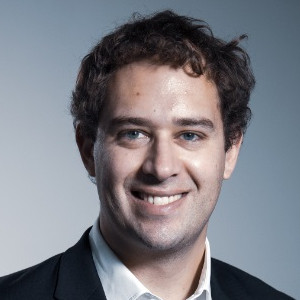Hello! How should I approach brainstorming questions during McK interviewer led cases?
Übersicht der Antworten
Hi,
There are typically 3 stages of brainstorming potential solutions to a problem during McK interviewer led cases:
1) Prepare a long list of potential solutions to a problem
You need to create a MECE list of relevant ideas, which can solve the problem. Ways to approach:
- Zero drafting - this technique helps establish what you currently know and get your initial ideas out of your brain and onto paper
- SCAMPER technique
- Substitute - take a part of the product, service or process etc. that you could replace with another to see whether it will result in improvements, such as efficiency gains
- Combine - one idea might not work alone, but you could combine several ideas, processes or products into one more efficient output. A great example for a combination of two different products are cell phones with an integrated camera
- Adapt - an idea that worked to solve one problem could also be used to solve a different problem. An example for the successful adaption to a new situation is Netflix. The company started out in 1999 as a DVD rent provider, but they quickly realized that the future belongs to online streaming and changed their product
- Modify - Changing part or all of the product or process, or distorting it in an unusual way
- Put to another use - put the current product or process in another purpose or use the existing product to solve problems. For example, this technique can be used to learn how to shift an existing product to another market segment or user type
- Eliminate - eliminate inefficient processes with the goal of streamlining them. An example for eliminating is Apple’s approach to not include an optical CD drive in their laptop to make them thinner and lighter
- Reverse - explore the innovative potential when changing the order of the process in the production line
- Analogy thinking - explore inspiring cases and mix their top features with your industry, to come up with new powerful concepts
- Forced connections - take two unrelated concepts and forge a relationship between them
2) Prepare a shortlist of solutions
You need to select solutions that would be financially adequate, could be achieved in the foreseeable future and do not face any constraints of the client situation.
3) Prioritize solutions
Apply 80/20 rule to select 20% of initiatives that would generate 80% of the upside effect.
Best,
Anton
Hi there,
I would recommend the following steps when you have to brainstorm during a case:
- Ask for one minute of time to structure your thoughts
- Present a first level of the structure, made by MECE buckets. This is something you can do even if you have never seen that question before. If you go blank, you can use a structure as X vs Non-X. Potential divisions include: Long term vs short term; Current vs New; Financial vs Non-financial. The more you practice cases in the right way, the more you will be able to derive appropriate MECE areas fitting a case.
- Brainstorm options in each of the areas. Your creativity in this area is directly correlated with the number of cases you have done. If you feel weak in one specific industry, the most effective strategy is to go through a good consulting MBA casebook (there are many available for free online – although not all are good) and screen the list for the industries interesting for you. MBA casebooks are not good in terms of the structure of the case but can help to develop creativity.
I provided an example below.
----------------------------------------------------------------------------------------------------------------------------------------
Interviewer. So, generally speaking, how would you decrease the cost of raw materials?
► STEP 1: ASK FOR ONE MINUTE OF TIME
Interviewee. That’s an interesting question. Do you mind if I take 1 minute to think about it?
Interviewer. Please take your time.
► STEP 2: IDENTIFY MECE BUCKETS
Interviewee. Thanks; I believe there are two key areas to decrease the cost of raw material; we may decrease the cost of each unit, or we may decrease the number of units we buy. I would like now to go a bit deeper into these two components.
(Note that even if you are brainstorming, you are first presenting a list of the MECE areas. This is fundamental to brainstorm correctly)
► STEP 3: BRAINSTORM OPTIONS IN EACH AREA
Interviewee. Well, in order to decrease the cost per unit we may do a couple of things, keeping in mind we want to maintain revenues at the same level:
- we may negotiate a lower price;
- we may look for other suppliers.
In order to decrease the number of units, we may do the following:
- we may start to use a more efficient technology for our raw material, so that we have less waste;
- we may use a new kind of raw material for which there is less waste.
----------------------------------------------------------------------------------------------------------------------------------------
Best,
Francesco
(editiert)
Hi there, can you give a specific example?
It´d be more insightful for you and all the community.
Cheers!
Think of them like a mini-framekwork: All the same rules apply!
So, be structured, be MECE, remember the objective, have a hypothesis, etc. etc.
Depending on the question/your style, consider either 1) Asking for 10 seconds to jot down your thoughts 2) Buying time for your thoughts by saying "Ok, that's interesting. So, if we're thinking about A, then what we'd need to do is" 3) Writing as you speak 4) Thinking outloud
Hello,
The challenge here is to define a structured approach for the question, to make sure you are MECE.
My advice here not to get lost is to draw the value chain of the industry (or the process flow; it depends on what you need to answer), breaking a big question in smaller pieces. Then, you can do your brainstorming for each piece, using SCAMPER or any other approach you are more used to.
Cheers,
Raphael
There's 2 essential approaches
Let's take an example - you are brainstorming ways to help Airbnb make revenue during the coronavirus
- 'Top-Down'
- Start with high level overview buckets and then fill them in, for example
- Restructure current businesses
- E.g., make Airbnb experiences virtual and accessible to everyone regardless of location
- Repurpose listings where possible
- Enter new businesses
- Enter long term lease model to counteract fall in short term housing
- Rent out garage/other storage spaces till coronavirus impact is lower
- Restructure current businesses
- 'Bottom-Up'
- Lay out as many ideas as you can and worry about grouping them later on
- Virtual classes!
- Virtual tours of city
- Rental service
- Enter dormitory business
- Business space vs Residential
- Enter new business not related to travel
- Sell information
- Now you can group them in ways that make most sense to you
- E.g. - move feasible services online, enter new businesses, use data for revenue
Hope this helps!
Udayan
Hi,
The question that you tried to answer was a typical creativity question. Interviewers can ask you the following questions:
-
Let's generate 10 ideas how to…
-
Let's brainstorm…
-
How will you get this data if you are at the real project…
-
How will you check the following assumption…
-
Do you have some ideas how to… Any other ideas?... Tell me more...
-
etc...
I recommend the following approach to creativity questions:
1) Ask an interview for a minute: "Can I take a minute to structure my thoughts?"
2) Think of several buckets of ideas. Remember to think as big as possible
3) Narrow down to each bucket and generate as many ideas as possible. If the idea is too high-level, you can come up with examples
4) Present the structure (buckets) and then your ideas
5) Generate more ideas within the buckets if required by the interviewer
You may be wondering how to develop creativity?
Although most of the companies would say that you don't need any specific business knowledge, in reality, it is hard to solve a case purely based on common sense. The lack of business knowledge becomes a very common problem, especially among people with non-business backgrounds
Business Acumen is all about building proper industry and functional knowledge. Here is how you can do that:
-
Practice more cases with the other candidates. Try to start with the most common industries - Retail, Consumer Goods, Airlines, Banking
-
Study the annual reports of the public companies in each industry. They have a good overview of the company and the industry.
-
Get the industry information from relevant books, magazines, etc.
-
Study MBA cases. They have a good industry overview. You can purchase HBS cases here: https://hbr.org/store/case-studies
For each industry, you should understand:
-
Revenue streams
-
Cost structure
-
Average margins
-
Key Performance Indicators
-
Industry trends
Best
Hello,
I wouldn't get mad trying to use "prepackaged" techniques. You should always try structure your problem as in a "mini business case". Take your time, write down some ideas and then try to prioritize them.
It could be useful to have some lists of "common answers", for example a list of fixed costs or additional revenues, that you can learn by heart so that you have only to pick up the ones fitting with your case.
Best,
Luca
Dear A,
I really appreciate Francesco structure and examplified answer.
Best,
André










Awesome framework! Exactly what I was looking for. Thanks